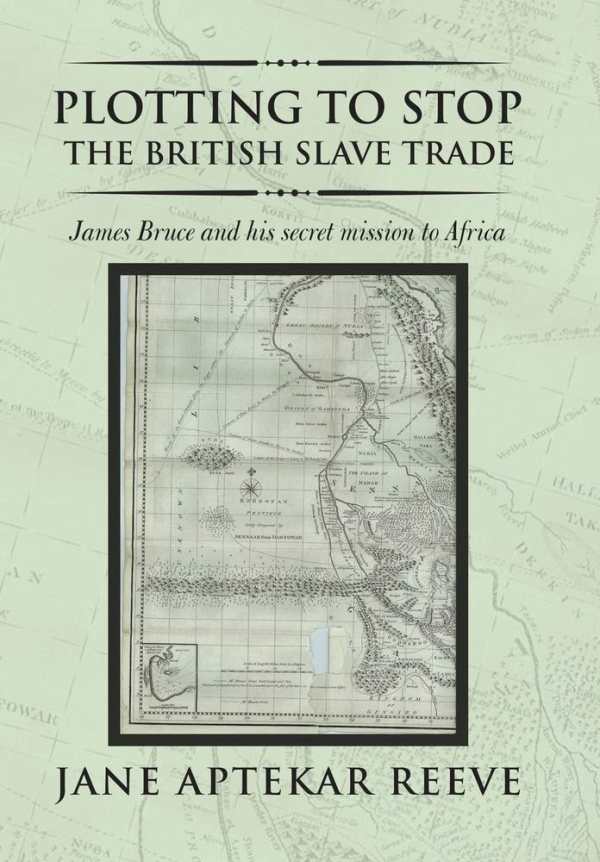Plotting to Stop the British Slave Trade
James Bruce and His Secret Mission to Africa
Plotting to Stop the British Slave Trade is an ambitious academic volume that approaches the explorer James Bruce from a fresh angle.
An enigmatic historical figure is placed in a new light in Jane Aptekar Reeve’s Plotting to Stop the British Slave Trade.
James Bruce, best known by the moniker “the Abyssinian traveler,” was an accomplished traveler, geographer, and author. A Scotsman through and through, he triumphed over hardscrabble beginnings and early tragedies to become a prominent figure in British politics and society in the 1700s. After serving as the British consul to Algiers, he undertook what would become his crowning achievement: several expeditions deep into the jungles of Ethiopia to “discover” the source of the Blue Nile. But, Reeve argues, Bruce’s mission had another goal: that of a covert abolitionist seeking to dismantle the British slave trade.
Using material from Bruce’s own book about his exploits in Ethiopia, Travels to Discover the Source of the Nile, as well as supplementary details from other historical sources and contemporary academics, Reeve goes where no biographer has gone before in making her case for Bruce’s antislavery views and work. From in-depth analysis of art included in Travels to discussions of well-known abolitionists whom Bruce held among his friends, no stone is left unturned in her quest to prove this alternate side to the affable Scotsman.
When seeking proof of Bruce’s antislavery mission, the book places most weight on what is absent. Drawing attention to Bruce’s connections to outspoken abolitionists, his religious views, and his childhood growing up surrounded by bonded Scottish miners, it nevertheless acknowledges that none of Bruce’s writings contain explicit antislavery sentiments. Statements regarding Bruce’s personal abolitionism are thus rooted only in conjecture, and “I think” and “In my opinion” openers lack authority. Repeated mentions of Bruce’s tendency to lie and exaggerate, as well as the low opinion many of his contemporaries held of him, further undermines the work’s argument.
Though intensive research is evident—there are over seventy pages of back matter in appendixes, indexes, and a bibliography—the book’s exacting details are too exhaustive when their focus drifts from Bruce. Many sections of the lengthy text could serve as foci for works of their own, such as divergences into the history of Ethiopia, extensive background on the Seven Years War, and biographies of Bruce’s contemporaries. Some tangents—the origin of Guy Fawkes Day and an inventory of flora and fauna Bruce brought back from Africa, for example—are fascinating in their own right, but contribute little of evidentiary value to the book itself. An annotated gallery of illustrations related to Bruce and his travels appears too early in the text, muddying the chronology and introducing myriad unfamiliar people and places. While helpful for setting the scene, this minutiae obscures the case for Bruce’s abolitionist leanings.
Plotting to Stop the British Slave Trade is an ambitious academic volume that approaches the explorer James Bruce from a fresh angle.
Reviewed by
Danielle Ballantyne
Disclosure: This article is not an endorsement, but a review. The publisher of this book provided free copies of the book and paid a small fee to have their book reviewed by a professional reviewer. Foreword Reviews and Clarion Reviews make no guarantee that the publisher will receive a positive review. Foreword Magazine, Inc. is disclosing this in accordance with the Federal Trade Commission’s 16 CFR, Part 255.

